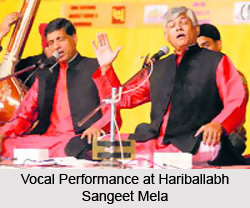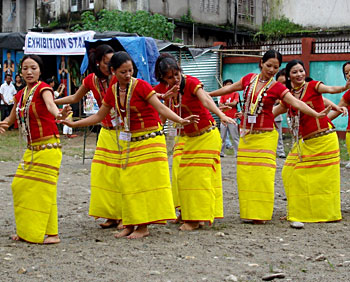 Fairs of Jalandhar, Punjab, play a vital role in assembling people belonging to different religions for celebrating the culture of the city. People residing in the city are known to be fond of fairs and festivals and celebrate them with great vivacity. These serve as excellent occasions to amalgamate the diverse cultures and lifestyles. These fairs are not only cherished by the local people but also invite tourists from far off places to become a part of the festive spirit.
Fairs of Jalandhar, Punjab, play a vital role in assembling people belonging to different religions for celebrating the culture of the city. People residing in the city are known to be fond of fairs and festivals and celebrate them with great vivacity. These serve as excellent occasions to amalgamate the diverse cultures and lifestyles. These fairs are not only cherished by the local people but also invite tourists from far off places to become a part of the festive spirit.
Hariballabh Sangeet Mela
Hariballabh Sangeet Mela is organized in Jalandhar in the commemoration of the saint and musician Swami Hariballabh. The fair is organized every year from 27th to 30th December at Devi Talab, a tank, situated near the Samadhi of the saint. Renowned classical musicians and singers hail from all around the nation to cherish this grand fair.
History of Hariballabh Sangeet Mela
As per the findings of Punjab University, Swami Hariballabh belonged to an affluent family residing in the village Bajwara located in the district of Hoshiarpur. Renouncing the world, Swami Hariballabh became the disciple of Swami Tulja Gir who instilled the passion of music in him. Through his dedication he reached pinnacles of Indian classical music and his Dhrupad renditions were considered masterpieces. Apart from delivering spectacular renditions, he was also a remarkable composer and had created numerous tunes in classical music. Swami Hariballabh`s talent had earned him a number of disciples and admirers and Pandit Tolo Ram, a Brahmin of Jalandhar, was a prominent disciple among them. Pandit Tolo Ram had great organizing powers and thus after the demise of his Guru he devoted himself to the service of the institution. He toured to distant regions for arranging funds for the fair.
Features of Hariballabh Sangeet Mela
The fair has presently become a highly revered destination for all the top notch musicians who visit the fair irrespective of cast, creed and religion. The Smadh of Swami Hariballabh is the shrine comprising a single small-roomed construction where worship of Shiva Lingam is done. Classical music lovers from distant regions visit the fair to celebrate this exquisite tradition of India.
 Fair of Baba Sodal
Fair of Baba Sodal
The fair of Baba Sodal is organized as a tribute to a small boy named Sodal who gained the reverence of being the baby God. The fair is held on his death anniversary at his Samadhi, every year in the Bhadon month of Hindu calendar which corresponds to mid September roughly. The deity is believed to have left for heavenly abode on 14th of Shukal Paksh which marks the day of celebration of the fair. In the morning of the fair women arrive in groups to make offerings at the Samadhi.
Legends of the Fair of Baba Sodal
Legends say that Sodal was born in Jalandhar to a family of Chadha, a clan of Khatri community. Once his mother went to the nearby pond for washing clothes and Sodal followed her. Despite of his mother`s constant insistence to return, he stayed back and thus out of anger her mother asked him whether he had come to die and furiously she asked him to drown himself in the pond. Sodal then asked her mother to repeat her words thrice and as she did so, he thrust himself into the water and disappeared forever. Another version of the legend says that on hearing the words he just fell on the spot and died. There is also a third version which says that he transformed into a snake and bored into the earth.
Features of the Fair of Baba Sodal
Smadh of Baba Sodal forms the main location of the worship where a painted portrait of Baba Sodal has been placed adorned with garland and rosaries. A priest looks after the Smadh. The offering made at the Smadh during the fair are distributed among the pilgrims with a few drops of water sprinkled on their body from Baba Sodal-Da-Sarowar, a tank situated there. A dip in the tank is also considered a holy act. Devotees belonging to different religions arrive at the fair from different places such as Delhi, Haryana, Punjab and Uttar Pradesh. Females preponderate seeking blessings for children and well being of families can be prominently seen in the fair.



















